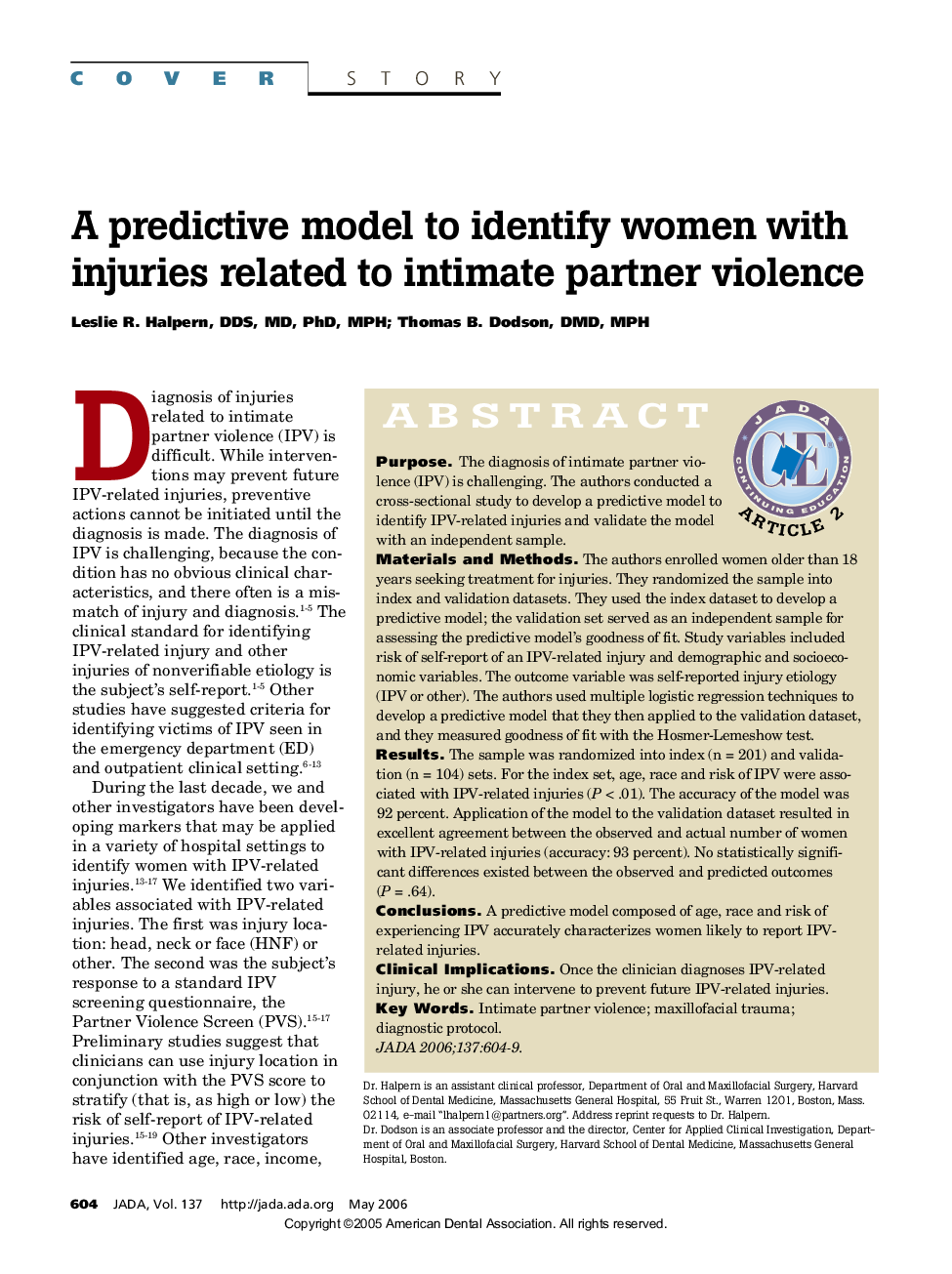| Article ID | Journal | Published Year | Pages | File Type |
|---|---|---|---|---|
| 3140650 | The Journal of the American Dental Association | 2006 | 6 Pages |
ABSTRACT PurposeThe diagnosis of intimate partner violence (IPV) is challenging. The authors conducted a cross-sectional study to develop a predictive model to identify IPV-related injuries and validate the model with an independent sample.Materials and MethodsThe authors enrolled women older than 18 years seeking treatment for injuries. They randomized the sample into index and validation datasets. They used the index dataset to develop a predictive model; the validation set served as an independent sample for assessing the predictive model's goodness of fit. Study variables included risk of self-report of an IPV-related injury and demographic and socioeconomic variables. The outcome variable was self-reported injury etiology (IPV or other). The authors used multiple logistic regression techniques to develop a predictive model that they then applied to the validation dataset, and they measured goodness of fit with the Hosmer-Lemeshow test.ResultsThe sample was randomized into index (n = 201) and validation (n = 104) sets. For the index set, age, race and risk of IPV were associated with IPV-related injuries (P < .01). The accuracy of the model was 92 percent. Application of the model to the validation dataset resulted in excellent agreement between the observed and actual number of women with IPV-related injuries (accuracy: 93 percent). No statistically significant differences existed between the observed and predicted outcomes (P = .64).ConclusionsA predictive model composed of age, race and risk of experiencing IPV accurately characterizes women likely to report IPV-related injuries.Clinical ImplicationsOnce the clinician diagnoses IPV-related injury, he or she can intervene to prevent future IPV-related injuries.
